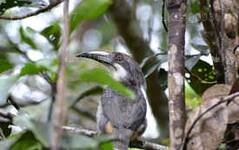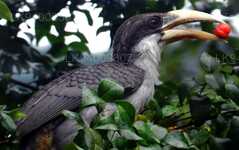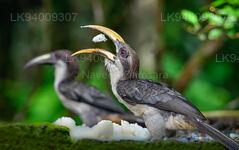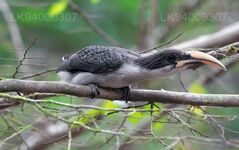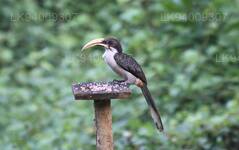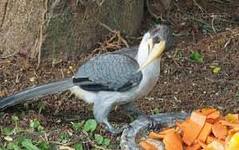
Endemic Birds
Sri Lanka boasts a remarkable array of endemic birds, including the vibrant Sri Lanka Blue Magpie, the elusive Sri Lanka Whistling Thrush, and the striking Sri Lanka Junglefowl. With diverse habitats, the island fosters a unique avian biodiversity, making it a haven for birdwatching enthusiasts and conservation efforts.
Ceylon Grey Hornbill
Sri Lanka Grey Hornbill "Ocyceros gingalensis" (Shaw, 1811)
This is one of the most commonly-seen endemic birds. Essentially, it is a tall forest dwelling species. They occur throughout the wet-zone lowlands (except coastal areas) and mid-hills up to altitudes of around 1,200 meters, as well as the adjacent intermediate and dry zones. The birds travel around in pairs or small flocks, although larger numbers are apt to gather at fruiting trees. Feeding action is fascinating: the fruit or prey is grasped by the tip of the bill, tossed into the air and then engulfed as it falls.
The sexes are about the same size, but the male may be distinguished from the female by its mainly cream-coloured bill, blotched in black at the base. The female’s bill is black with a cream stripe along the lower edge of the upper mandible. The call of this species is usually a loud kaa.. kaa.. kaa, developing into a ka-ka-ka-ka, other calls also having been noted (e.g kuk…kuk…kuk-kuk-kuk; ko…ko… ko-ko-ko)
These hornbills breed between April and August. Nests are built in tree cavities, the female entering the hollow and sealing herself in with a mortar made of her own excreta. A narrow vertical slit is left open however, through which the male feeds her several times each day. Here she lays between one and three white eggs (41.5x33mm) and incubates them, during which period she moults. Once the chicks hatch, the newly-fledged female breaks free from her cell and assists the male in feeding the brood.

